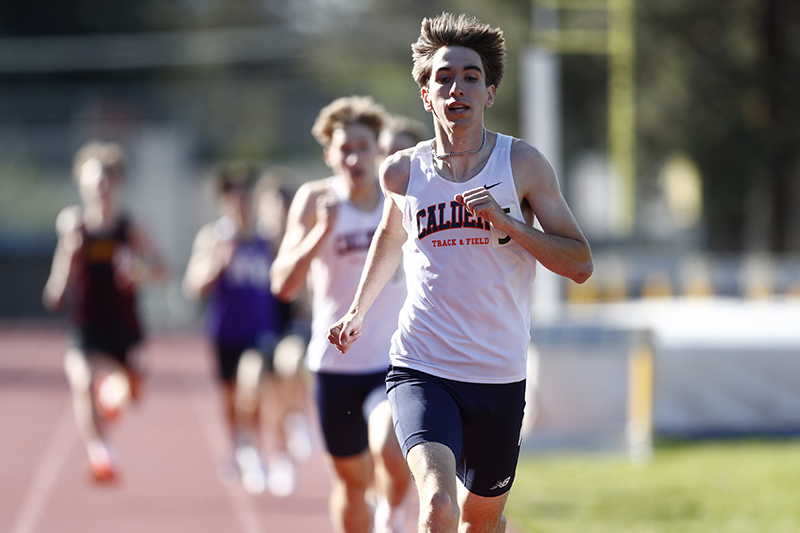Tour pros are no longer aces when it comes to holes-in-one
Published 12:00 am Monday, May 12, 2014
PONTE VEDRA BEACH, Fla. — At a 2010 PGA Tour event in Las Vegas, Jonathan Byrd beat long odds with the golf equivalent of a game-ending home run. Using his 6-iron, Byrd holed his tee shot on the 204-yard par-3 17th at TPC Summerlin to defeat Cameron Percy and Martin Laird in a playoff.
The par-3 17th at TPC Sawgrass is less than half as long but twice as intimidating because of its island green. Well before the Players Championship this year adopted a chronological three-hole playoff starting at No. 16, the likelihood of a deciding ace here Sunday was remote.
Since 1986, six holes-in-one have been recorded at No. 17 during the Players Championship, most recently by Miguel Ángel Jiménez in the first round in 2002. Luke Donald came close Friday. He tracked his tee shot from 137 yards as it landed on the green and rolled to a stop 16 inches from the flag.
Since the tournament was moved to May from March in 2007, one ace has been recorded on the Stadium Course’s four par 3s. Robert Garrigus holed his tee shot on the 13th hole, which then measured 164 yards, during the second round in 2008.
Because the temperatures are warmer in May, the Bermuda greens are not overseeded before the event the way they were when it took place in March. The date change has had unintended consequences. A few unusually cold winters in the area have made some of the course’s putting surfaces uneven, a problem aggravated this year by the misapplication of a chemical intended to promote growth. Typically, as the temperatures rise, the putting surfaces grow firmer and they become, in effect, a shield against aces.
“Since ’07, it has become harder to spin the ball on that green on 17,” said Johnson Wagner, who entered the week with a career average of 2.5 strokes on the hole, the best in the field. “To a forward pin, the ball’s not coming back as fast. And to a back pin, it’s just harder to hold.”
In the first year of the tour’s wraparound schedule, precision has consistently, inexplicably declined. In the first 26 official events, there have been five aces, well off last year’s pace of 30 in 44 events.
The high-water mark for holes-in-one was 44 in 1994, which was an average of one a tournament.
Why are the world’s best golfers falling short of the accuracy displayed by, say, Olympic archers, who shoot from a distance of 86 yards?
The par 3s on tour are being stretched to challenge the players, as evidenced by the 13th here, which is nearly 20 yards longer than when Garrigus aced it. Last week at Quail Hollow, one of the par 3s measured 250 yards.
The players here are using wedges into 17, but the water surrounding the green makes the landing area feel like the size of a thumbtack.
Nick Faldo, a six-time major winner, said he made his first six aces as a professional, and eight of his 11, using his 6-iron. No matter the club in his hand or the distance to the pin, he said: “Very few times do you aim and say, ‘I’m going for a hole-in-one.’ It’s a bit like chess. You know where you want to land your ball to give yourself the putt that you want.”
Only once, Faldo said, did he make like Babe Ruth on a par 3 and call his shot ahead of time.
Arriving at the 14th hole, a par 3 that was playing 189 yards, during his singles match against Paul Azinger in the 1993 Ryder Cup at the Belfry in England, Faldo said, he told his caddie, Fanny Sunesson, “This is a good time for a hole-in-one.”
He pulled his 6-iron from his bag and struck a shot that carried a greenside bunker and rolled into the hole.
Aces are the residue of skill and luck. As Justin Leonard, who made one of the four holes-in-one recorded at the 13th during the 2006 tournament here, said, “I’ve seen a lot of balls ricochet off flags.”
Robert Allenby had no explanation for why he leads all active tour players with nine holes-in-one. “Maybe I’m just lucky sometimes,” he said.
Surprised that the most skilled golfers in the world don’t have perfect aim more often? Byrd isn’t.
“Just because we’re on the PGA Tour doesn’t mean we’re all the best ball strikers in the world,” he said. “There are guys that aren’t on tour who probably hit it better than I do. We’re the best golfers in the world because of the intangibles.”
Night was falling on Byrd, Laird and Percy in 2010 as they arrived at their fourth hole of sudden death. On the 17th tee, they discussed their options with a tour official, who told them they could hit their tee shots and finish the next morning if it was too dark to putt out.
Byrd was the first to hit, and after the ball left his club face, he never saw it. Only a handful of people were around the green.
“Most of the fans were still at 18 watching it on the Jumbotron,” he said, “and you could actually hear them cheering before I knew it had gone in. It literally was a walk-off because I never went to the green.”
Someone retrieved Byrd’s ball and delivered it to him after Percy and Laird failed to match his ace.
“I hit a great shot, but for it to go in the hole was lucky,” he said. “First I was in shock, and then I was like, ‘Wow, I feel kind of bad for the other guys because they’ve got to follow that, and they’ve got to hole it.’ ”






